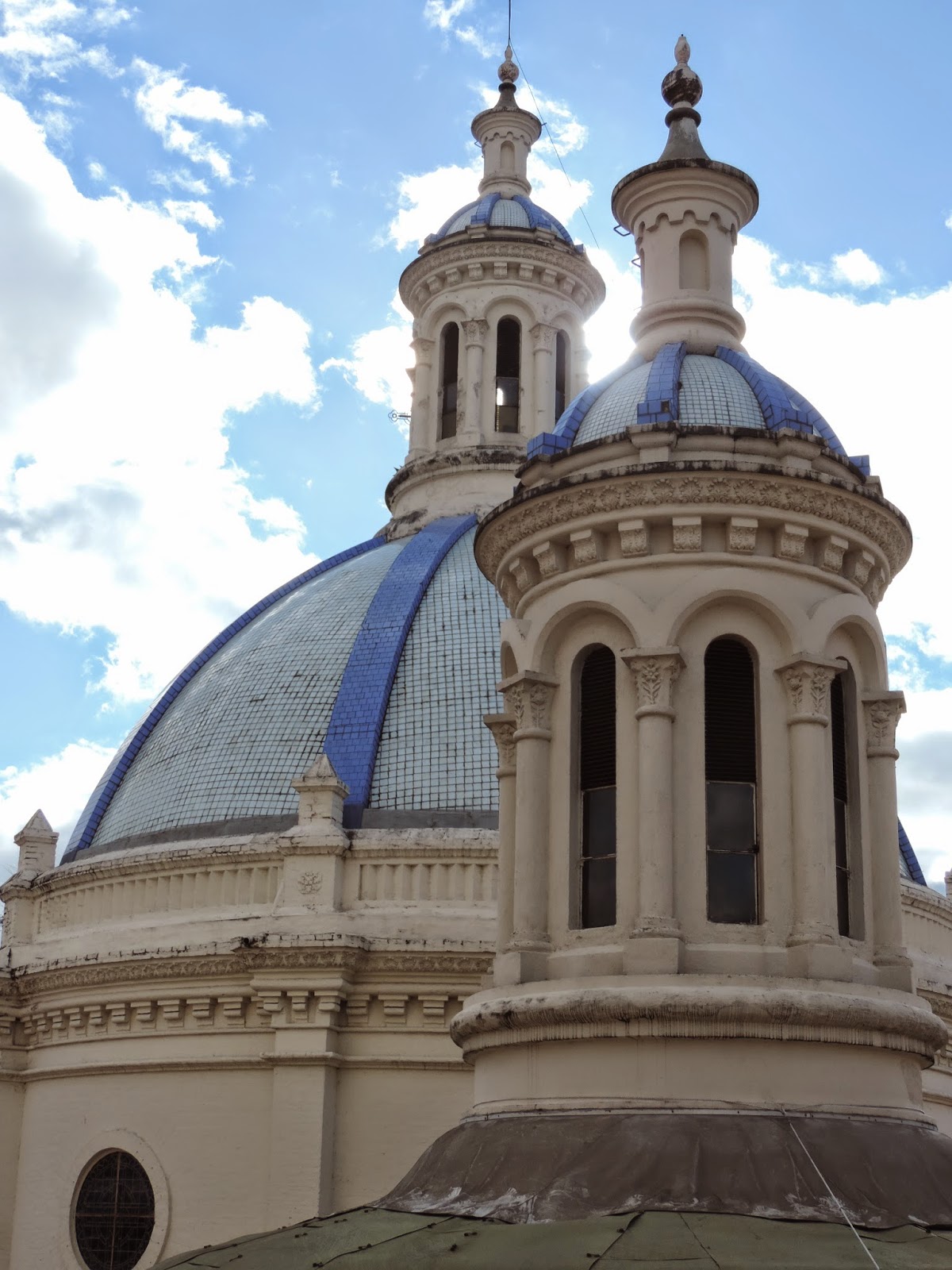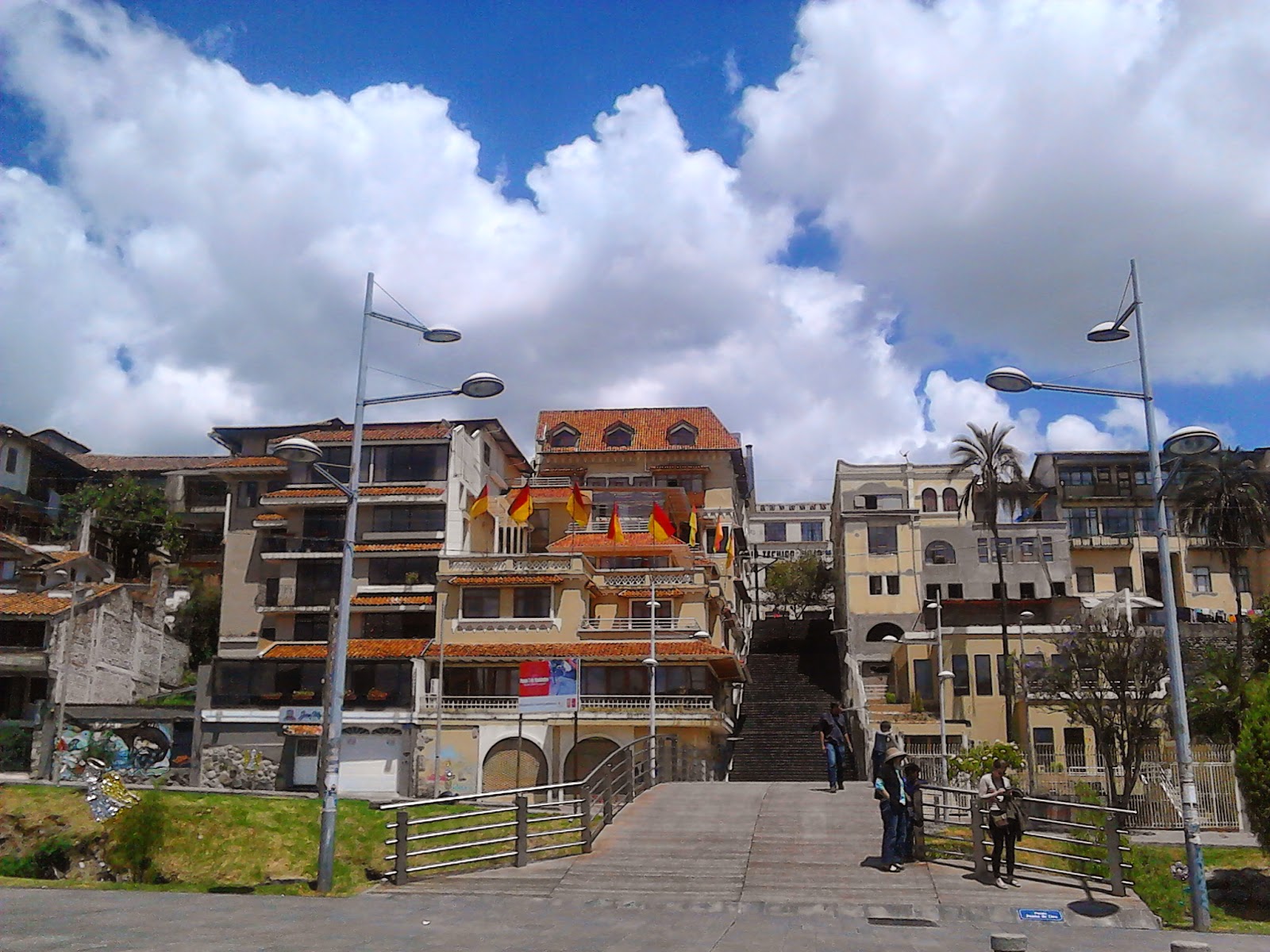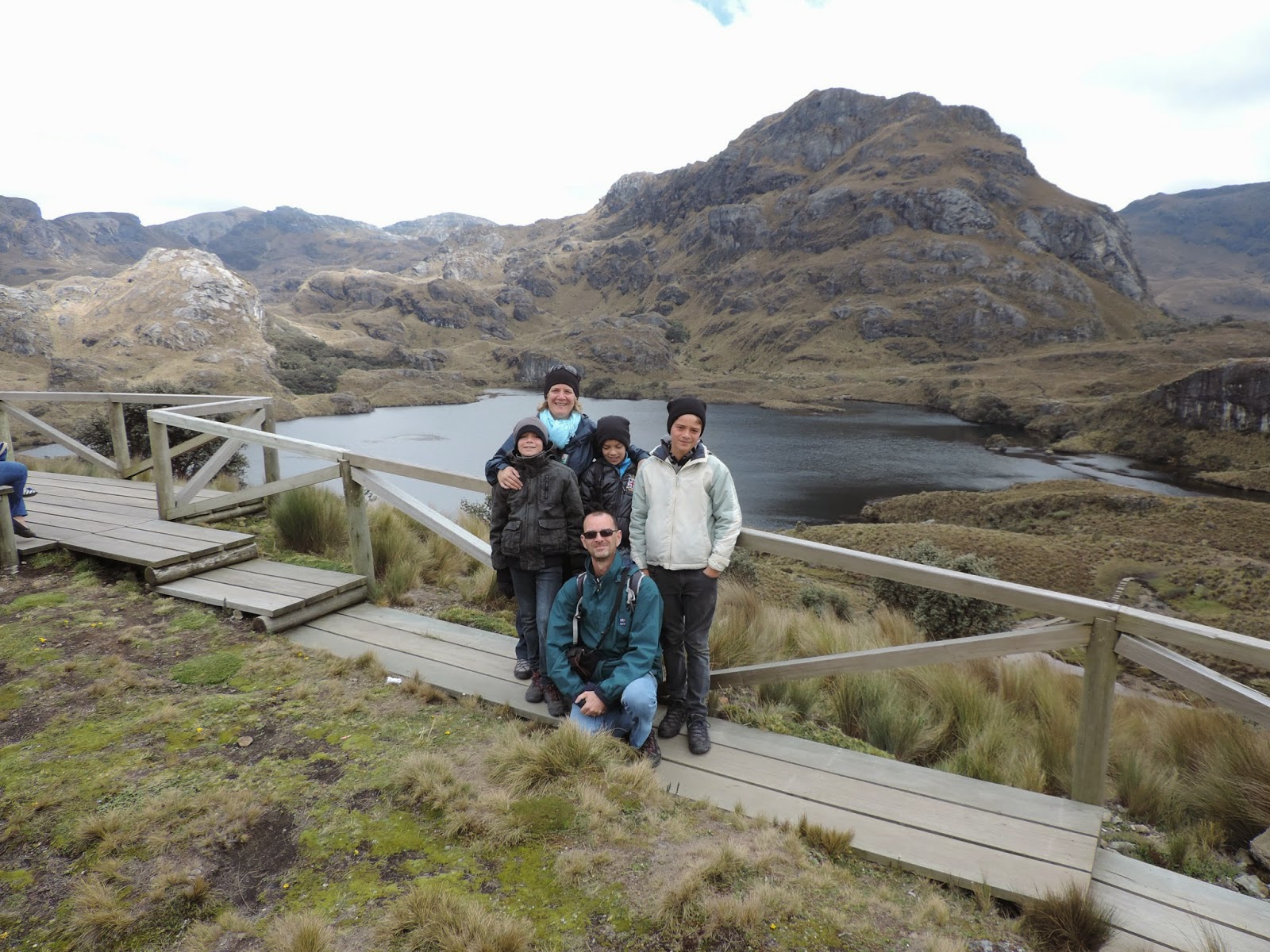Cuenca
Santa
Ana de los Ríos de Cuenca (spesso abbreviato semplicemente in Cuenca) è la
terza città dell'Ecuador per numero di abitanti (sopra i 500.000), capoluogo
della provincia di Azuay e dell'omonimo cantone.
Si trova
nella cosiddetta Sierra, una parte delle Ande, e sorge a circa 2.500 metri sul
livello del mare. All'epoca dell'impero Inca era conosciuta con il nome di
Tumibamba. La città attuale ha un tipico aspetto coloniale: il suo centro
storico, molto ben conservato, è stato per questa ragione inserito nell'elenco
dei Patrimoni dell'umanità dell'UNESCO.
Dalle
quattro terrazze che circondano Cuenca scendono a valle quattro fiumi: il
Machangara a nord, il Tomebamba (che divide in due la città), il Tarqui e il
Yanuncay (a sud), che confluiscono nel Tomebamba.
Santa Ana de los Ríos de Cuenca (often abbreviated simply in Cuenca) is the third largest city in Ecuador by population (over 500,000), capital of the province of Azuay and canton.
It is located in the so-called Sierra, a part of the Andes, and is located about 2,500 meters above sea level. At the time of the Inca Empire was known by the name of Tumibamba. The city today has a typical colonial aspect: its historic center, very well preserved, is listed as a UNESCO World Heritage Site.
From four terraces surrounding Cuenca lead down four rivers: the Machangara north, the Tomebamba (which divides the city in two), the Tarqui and Yanuncay (south), that flow into Tomebamba.
Santa Ana de los Ríos de Cuenca (often abbreviated simply in Cuenca) is the third largest city in Ecuador by population (over 500,000), capital of the province of Azuay and canton.
It is located in the so-called Sierra, a part of the Andes, and is located about 2,500 meters above sea level. At the time of the Inca Empire was known by the name of Tumibamba. The city today has a typical colonial aspect: its historic center, very well preserved, is listed as a UNESCO World Heritage Site.
From four terraces surrounding Cuenca lead down four rivers: the Machangara north, the Tomebamba (which divides the city in two), the Tarqui and Yanuncay (south), that flow into Tomebamba.
Website: Cuenca
La nostra casa e' proprio dietro il boschetto di eucalipti sulla destra in basso. In alto a sinistra si vedono invece le tre cupole della Cattedrale.
Our house is just behind the eucalyptuses on the lower right. On the top left you see the Cathedral's domes
La Cattedrale di Cuenca
Cuenca's Cathedral
Todos Santos
El Convento de La Asuncion e il mercato dei fiori
El Convento de La Asuncion and the flower market
San Sebastian
Palazzi nella piazza della Cattedrale, chiamata Parque Calderon
Buildings around the Cathedral
Il parco Calderon ai piedi della cattedrale.
Case tipiche di Cuenca
Typical Cuenca's houses
La bandiera dell'Ecuador...
You see Ecuador's flag in strange places
Qui ogni occasione e' buona per svolgere un lavoro
Here, every opportunity to work is good
involtini di pasta con ripieno di formaggio, fritti all'angolo della strada, 25 centesimi di dollaro
rolls of pasta filled with cheese, fried at the street corner, 25 cents
Uova di quaglia
Quail eggs
Frutta, si' quelle macchie rosse sono fragole enormi!
Fruit, yes those red spots are huge strawberries!
Tipo di 'gelato', non freddo, fatto di chiara d'uovo e zucchero... non per stomaci europei!
Kind of 'ice cream', but not cold, made of egg whites and sugar ... not for European stomach!
Un gelato??? Occhio al prezzo!
Fancy an ice cream? Look at the price!
Il mercato al coperto, si trova di tutto!
The covered market.
Lustra scarpe
Shoeshines
Prodotti artiginali
Artisan market
Candele fuori della cattedrale
Candles outside the cathedral
Erbe aromatiche
Herbs for tee or cooking
Gelataio in bici.
Ice cream on the go
Ecco i tre prodi che, divisa inclusa, si apprestano ad iniziare la scuola nuova!
Here are the three brave boys ready for the new school with the new uniforms!
Parco nazionale del Cajas, lago Toreadora, 3979 mt
Il Parque Nacional El Cajas, uno dei più spettacolari dell'intero Sudamerica, è caratterizzato dalla presenza del páramo, un habitat umido tipico della regione andina che si trova a un'altitudine compresa tra 3200 e 4200 metri. Il páramo, oltre ad offrire un'enorme ricchezza naturale - 5000 tipi differenti di piante, di cui il 60% endemiche - è una fondamentale risorsa per l'approvvigionamento idrico del paese grazie alla presenza di oltre 200 laghi e lagune di origine glaciale, collegati tra loro da fiumi e ruscelli di portata variabile. Due dei fiumi che attraversano Cuenca, il Tomebamba e lo Yanuncay, nascono proprio a El Cajas.
The Parque Nacional El Cajas, one of the most spectacular of the entire South America, is characterized by the presence of the páramo, a wetland habitat typical of the Andean region which is located at an altitude between 3200 and 4200 meters. The páramo, as well as offering an enormous natural wealth - 5000 different types of plants, of which 60% are endemic - is a fundamental resource for water supply in the country thanks to the presence of more than 200 lakes and lagoons of glacial origin, connected by rivers and streams of variable flow. Two of the rivers that cross Cuenca, the Tomebamba and Yanuncay, are born in El Cajas.
Quinua o Albero della carta o Polylepis: ha foglie sempreverdi, con foglie piccole dense. La corteccia è spessa e ruvida
e densamente stratificata per la protezione contro le basse temperatura. Il
nome Polylepis, infatti, deriva dalle parole greche poli (molti) e letis
(strati), riferendosi alla corteccia multistrato che protege la pianta dal
freddo. Alcune specie di Polylepis formano boschi che crescono ben di sopra
della linea degli alberi altitudini sopra 5000 m; Polylepis viene anche chiamato
albero della carta per via della sua corteccia particolarmente friabile.
Quinoa or Paper Tree or Polylepis: has evergreen leaves, with small leaves. The bark is thick and coarse and densely layered for protection against low temperatures. The name Polylepis, in fact, derives from the Greek words poly (many) and letis (layers), referring to the cortex multilayer that protects the plant from cold. Some species of Polylepis forests grow well above the tree line altitudes above 5000 m; Polylepis tree is also called the paper tree because of its bark particularly friable.
Quinoa or Paper Tree or Polylepis: has evergreen leaves, with small leaves. The bark is thick and coarse and densely layered for protection against low temperatures. The name Polylepis, in fact, derives from the Greek words poly (many) and letis (layers), referring to the cortex multilayer that protects the plant from cold. Some species of Polylepis forests grow well above the tree line altitudes above 5000 m; Polylepis tree is also called the paper tree because of its bark particularly friable.
La camminata e' resa difficile dal fango... si entra fino al ginocchio!
Mud, mud, mud up to the knees

























































